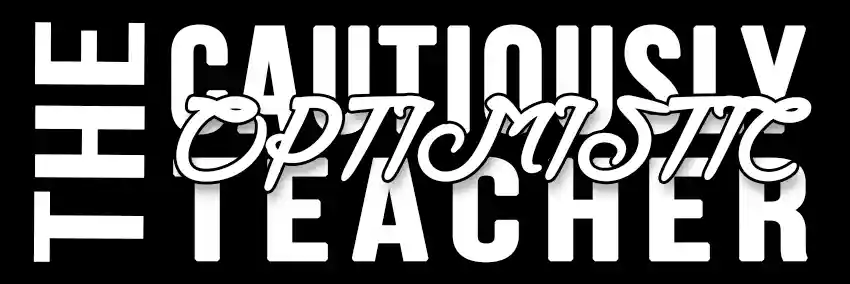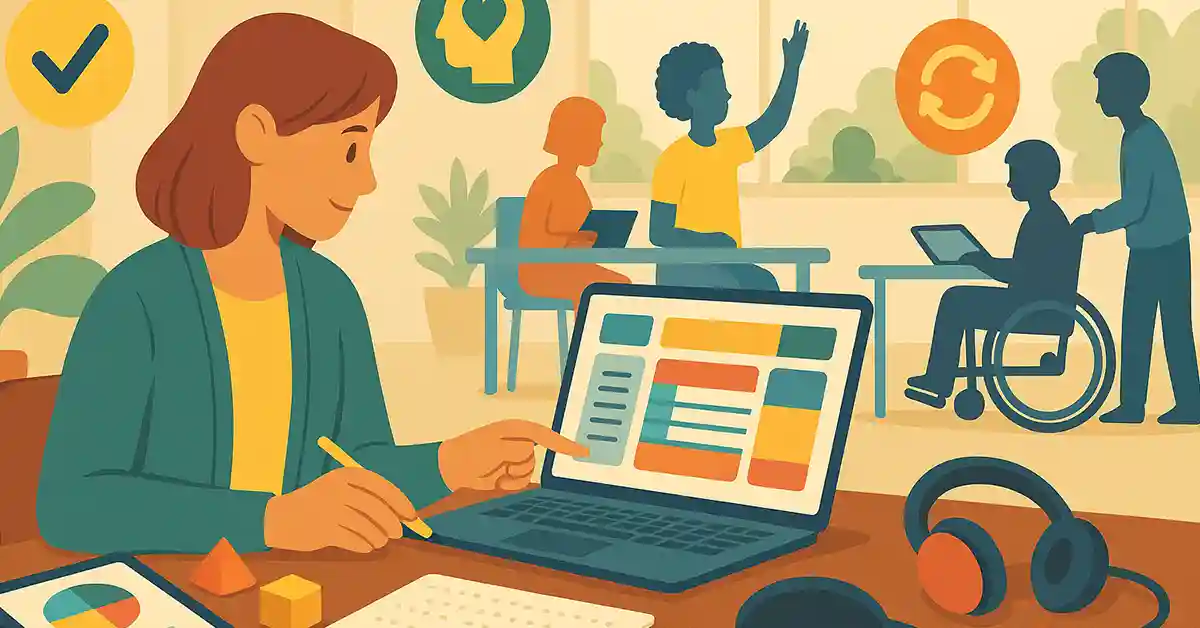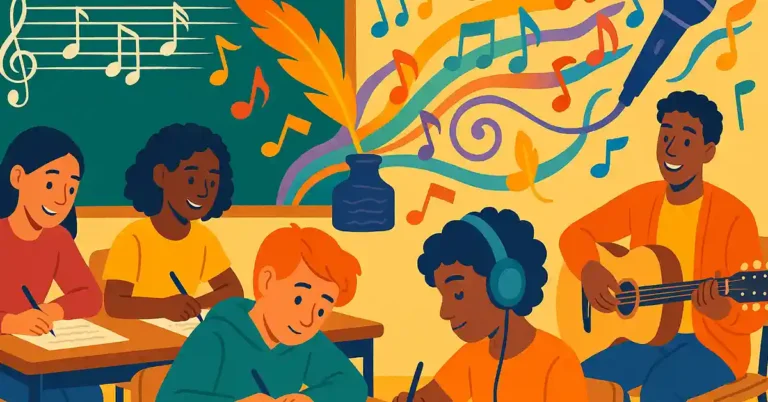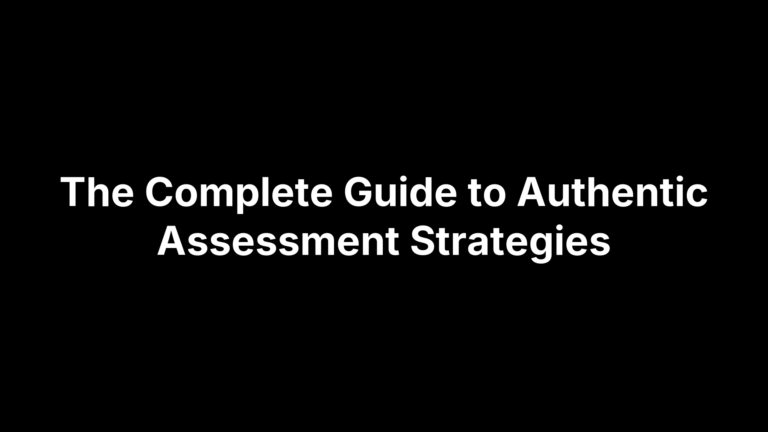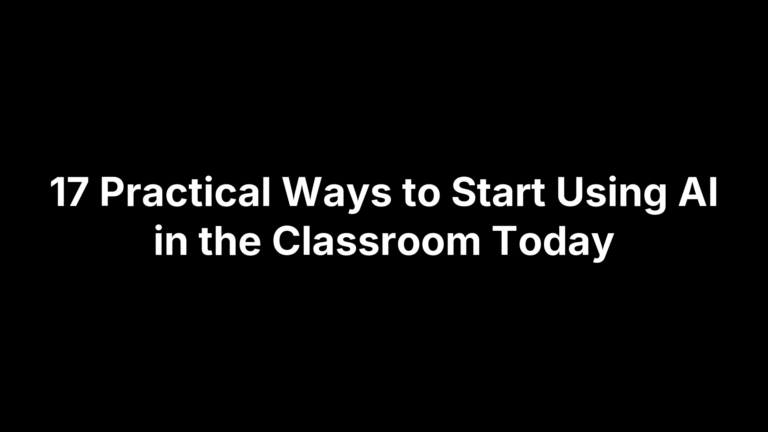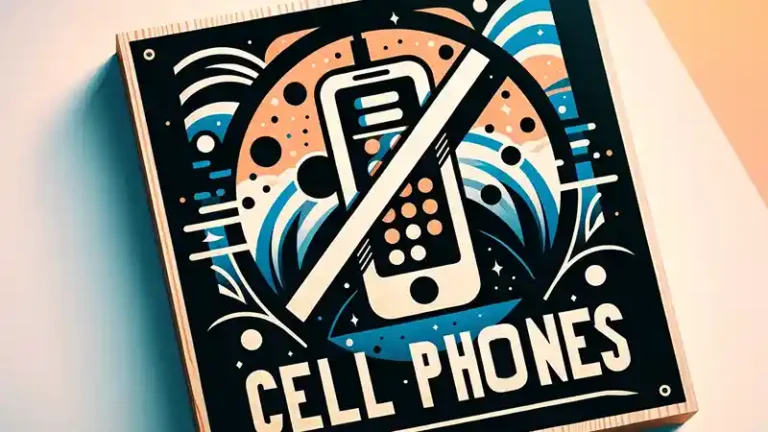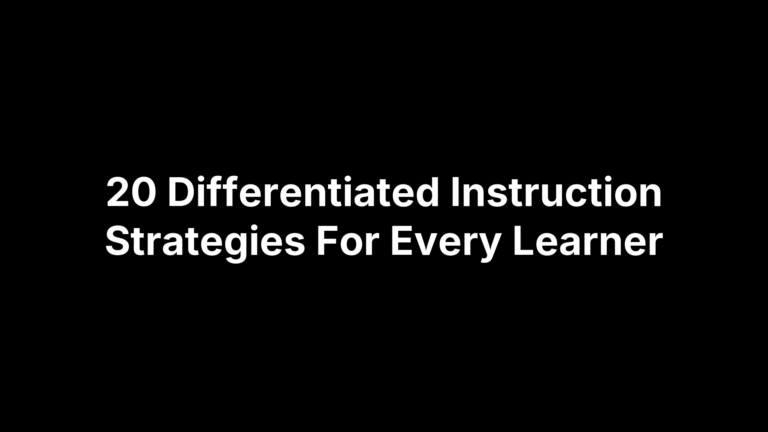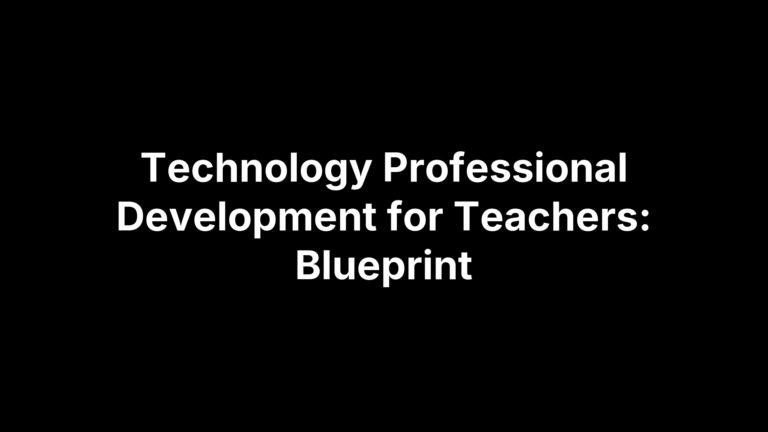UDL Lesson Plan Template: A Practical Guide for Inclusive Teaching
Universal Design for Learning (UDL) has come a long way since CAST first introduced the framework in the late 1990s. With the release of UDL Guidelines 3.0, the core message is clearer than ever: it’s the design—not the learner—that creates barriers. By proactively creating a UDL Lesson Plan, we give every student an equitable shot at success (udlguidelines.cast.org).
In this post I’ll walk you through:
Why a UDL lesson plan template makes your life easier (and your lessons stronger)
What belongs in a rock-solid template, checkpoint by checkpoint
How to fill it in with a real classroom example
Where to find trustworthy resources for deeper dives
By the end, you’ll have a ready-to-use template that aligns with the latest UDL research—and a clear roadmap for putting it to work tomorrow morning.
Why Plan the UDL Way?
Think of lesson planning like setting up a playground. If the only entrance is a tall ladder, you’ve already excluded half the kids before recess even starts. UDL helps us build multiple entrances (and slides, ramps, and swings) from the get-go, so no one is left waiting on the sidelines (CAST).
Three big payoffs:
Fewer mid-lesson “fire drills.” When access routes are built in, you’re not scrambling for last-minute modifications.
Stronger engagement. Students are free to choose pathways that fit how they learn best, which boosts motivation.
Data you can actually use. Varied representation and expression give you richer evidence of understanding, feeding future instruction.
The Anatomy of an Effective UDL Lesson Plan Template
Below is a modular blueprint you can adapt for any grade or subject. Notice that we don’t hide the UDL language; we surface it. That transparency helps administrators see the intentionality behind your choices—and helps students learn to make purposeful choices themselves.
1. Lesson Snapshot
Unit / Topic:
Grade & Subject:
Time Frame:
Standards / Learning Outcomes: Clearly list curriculum anchors.
2. Anticipated Learner Variability
Identify strengths, potential barriers, and relevant background knowledge.
Jot quick notes on linguistic diversity, sensory needs, interests, and executive-function skills.
3. UDL Checkpoints
Engagement
7.1 Optimize individual choice & autonomy – Offer project topics tied to student interests (e.g., energy conservation, sports science).
8.4 Increase mastery-oriented feedback – Use instant digital comments plus weekly one-on-one conferences.
Representation
1.2 Offer alternatives for auditory information – Provide captions and visual summaries for video clips.
3.3 Guide information processing – Supply graphic organizers and color-coded note sets.
Action & Expression
5.3 Build fluencies with graduated levels of support – Allow speech-to-text and scaffolded outlines.
6.4 Enhance capacity for monitoring progress – Embed self-assessment checklists in Google Classroom
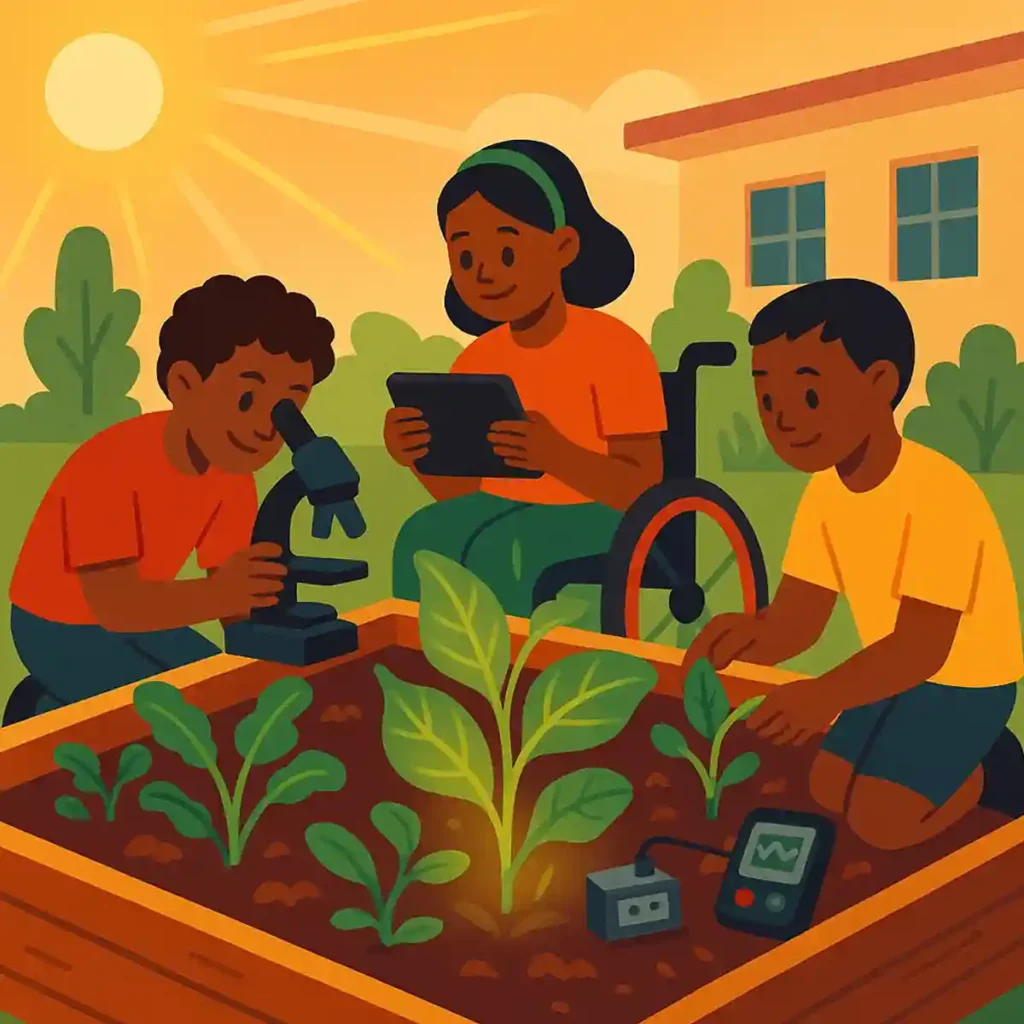
4. Materials & Tech
Links to readings, multimedia, manipulatives
Accessibility supports (alt text, adjustable font, etc.)
5. Formative Assessment
“Dip-sticks” like exit tickets, student-created quizzes, or Flip video reflections.
UDL lens: Are you capturing evidence from multiple means of expression?
6. Reflection & Iteration
What worked? What new barriers popped up?
How will you tweak engagement, representation, or action/expression next time?
Template Tip: Want a downloadable doc? Texas SPED Support hosts a free, editable UDL lesson plan form you can adapt in Google Docs or Word (Texas SPED Support).
A Walk-Through Example: Grade 7 Science—“Photosynthesis in Our Community Garden”
Below is a condensed illustration of how I populate the template. (I promise, in real life it’s neatly formatted in my planning notebook—coffee stains and all.)
Lesson Snapshot
Topic: Photosynthesis & Food Production
Length: Two 50-minute periods
Standard: “Explain how photosynthesis transforms light energy into chemical energy.”
Anticipated Learner Variability
English-language learners (ELLs) who benefit from visuals and translated key terms
One student with low-vision using a screen reader
High prior-knowledge group from last year’s gardening club
UDL Checkpoints (Highlights)
Engagement 7.2: Provide relevance—students choose between designing an infographic, TikTok-style explainer, or seed-packet storyboard to show why light is vital for growth.
Representation 1.3: Offer alternatives for visual information—3-D printed leaf models and a tactile diagram for the low-vision learner.
Action & Expression 6.3: Provide feedback that supports planning—use color-coded rubric with positive phrasing.
Materials
Sun-powered data-logger (Arduino)
Plant pigments demo kit
Choice board printed in English and Spanish
Formative Assessment
Mid-lesson “garden walk” where pairs annotate observations on sticky notes.
Exit ticket: One sentence on how plants “eat”—in any language or doodle form.
Reflection
ELL students loved bilingual labels; next cycle I’ll add an audio glossary.
Data-logger was a hit but needed an extra battery pack—add to checklist.
Five Quick Ways to Personalize the Template
Embed school-wide initiatives. If your district emphasizes social-emotional learning, align an Engagement checkpoint with self-management.
Link to student choice boards. Hyperlink from the template so your editing time stays minimal.
Color-code checkpoints. Green for Engagement, blue for Representation, purple for Action & Expression—makes walkthroughs a breeze.
Leverage tech shortcuts. Dropdown menus in Google Docs auto-populate checkpoint language (Teachers Pay Teachers).
Pair with a UDL reflection rubric. The UDL Project shares a simple rubric you can mirror (The UDL Project).
Frequently Asked Questions
Q: Do I have to hit every checkpoint in one lesson?
A: Absolutely not. Aim for purposeful variety across a unit. Over time, your template becomes a living document you tweak to spotlight different checkpoints.
Q: How does UDL differ from differentiated instruction?
A: Differentiation often starts after you see a gap. UDL moves that work up-front, anticipating barriers before they surface.
Q: Where can I learn more?
A: CAST’s interactive Guidelines site is the gold standard—bookmark it now (udlguidelines.cast.org). If you want a print companion, Patti Ralabate’s Your UDL Lesson Planner walks you step-by-step through the process
